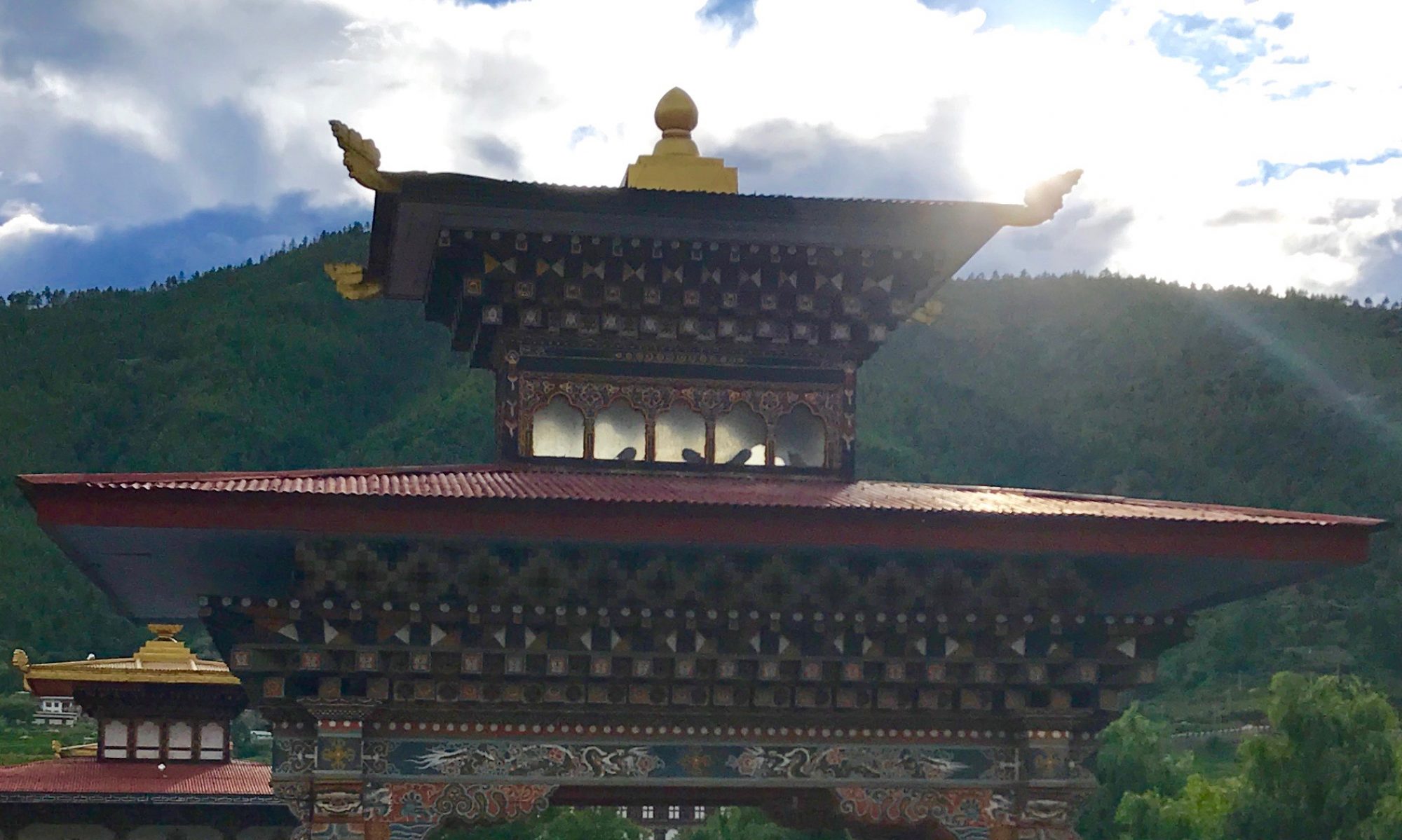Thursday morning, we had a little visitor to our kitchen:

Friday, Chimi Dorji, Chencho and Karma gave us a ride down to Trashigang, ostensibly to visit the cheese factory, but also in the end to help us manage the next step in the banking saga and to do a little shopping.
Friday is “no tolerance day,” so we had to go through two traffic checks on the road. Other days of the week, the traffic police can “consider you” (as the saying here seems to be): you can say, “Oh, I left my license at home!” or give some other excuse. But on Fridays, if you don’t have your license, then you are given a fine.

We know at least one person who drives around Kanglung but doesn’t have a license! She tried to take the driving test, but failed. There’s evidently a box painted on the road, and you have to drive into the box forward, and then maneuver around to come out forward. Then you have to reverse into the box and then maneuver around so that you reverse out again. If you touch the line at any point, you fail the test. “I don’t know what they are thinking,” says Chimi Dorji. “Who would drive into a box like that in the first place?” I reply: “Perhaps they think that if you can do all that, you won’t fall off the side of the mountain.” Dorji chuckles.
There is the standard wait for roadworks:
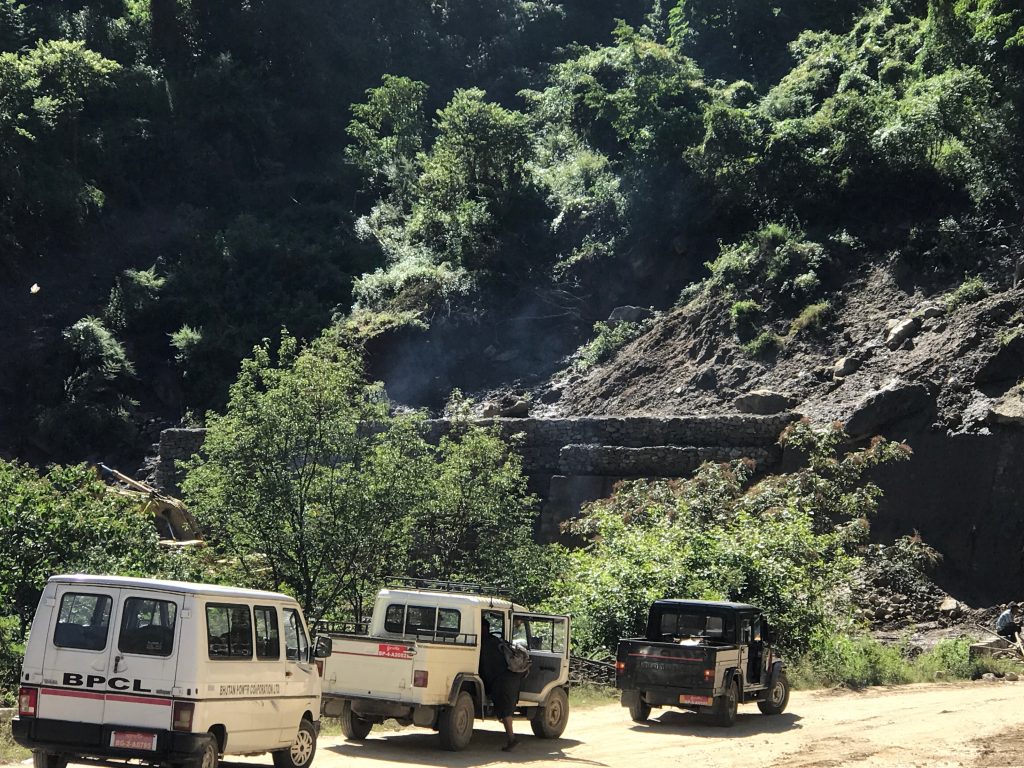
The rice paddies on the way to Trashigang are now full of scare-ghos:
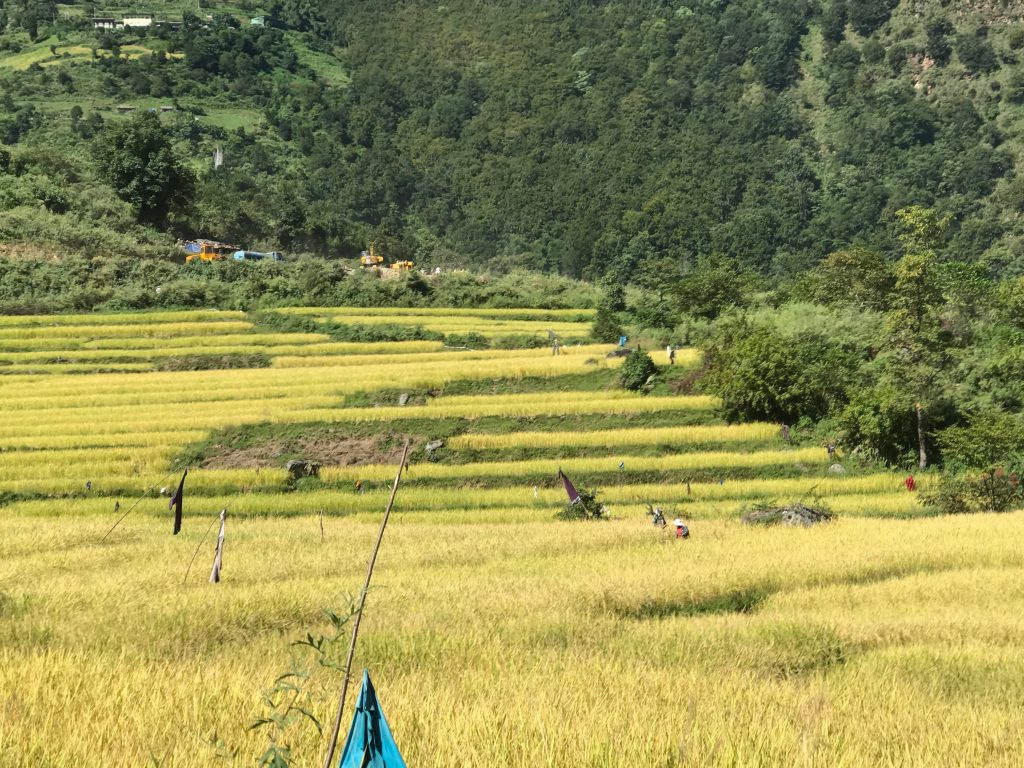
Chimi Dorji takes us (the “girl’s car” plus Jeremy) to the bank, while Karma and James go up to the hospital. Karma needs an abdominal ultrasound to try to find out why he’s been having abdominal pains. We don’t know how long it will take, so we just plug away on getting the cash card and investigating why the money from the USA has not arrived.
Then we go to what I think of as the tourist shop, so that Jeremy can get postcards. Chencho says the prices are not unreasonable there, so I should perhaps shift my terms of reference. We find a tegu that will work with the handwoven kira, and two wanjus. We have a choice between silk and rayon, and we go with rayon, since the cost of rayon is roughly 20% that of silk, and there aren’t any drycleaners in Kanglung.
Chimi Dorji asks the shopkeeper to show us a ritual horn. He blows on it and then explains that it is made out of a human shin bone. I should have taken a photo but I was too busy freaking out about the human bone. “They prefer human bones for the tone,” Chimi Dorji says.
Jeremy tries on a traditional Merak-style hat.

After a brief snack,
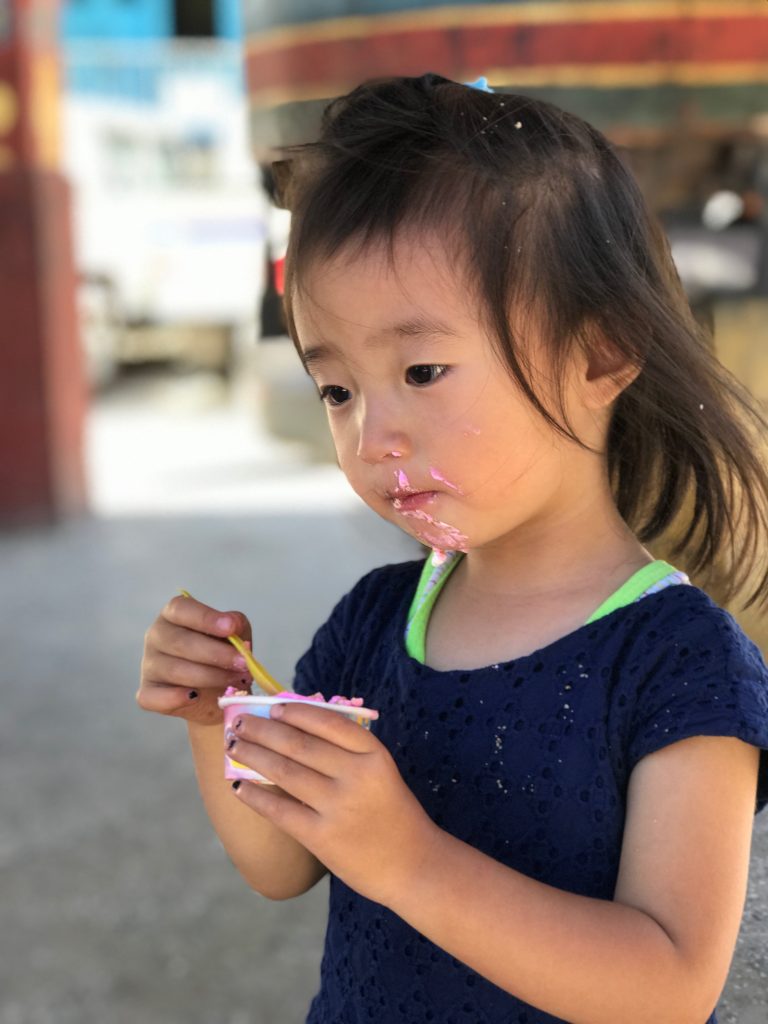
we end up visiting the cheese factory, based on Chimi Dorji’s recollection of earlier visits several years back. It turns out that the outlet shop is back in Trashigang. To visit the factory costs 300 ngultrum per person, which is a lot of money here. You have to dress in a special uniform they provide, in order to maintain sterilization standards. We decide to pass on the tour, at least for this day. But we do purchase vast quantities of dairy products, since who knows when we’ll be back?
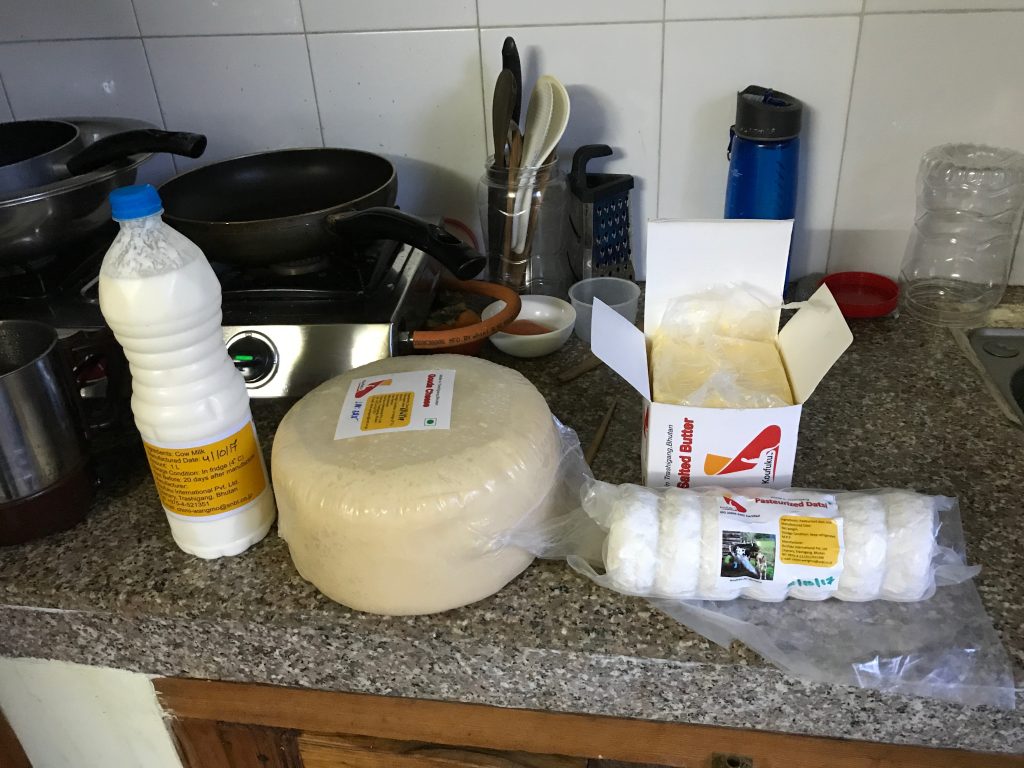
In the shadows, you can just about see the milk arriving in small quantities:
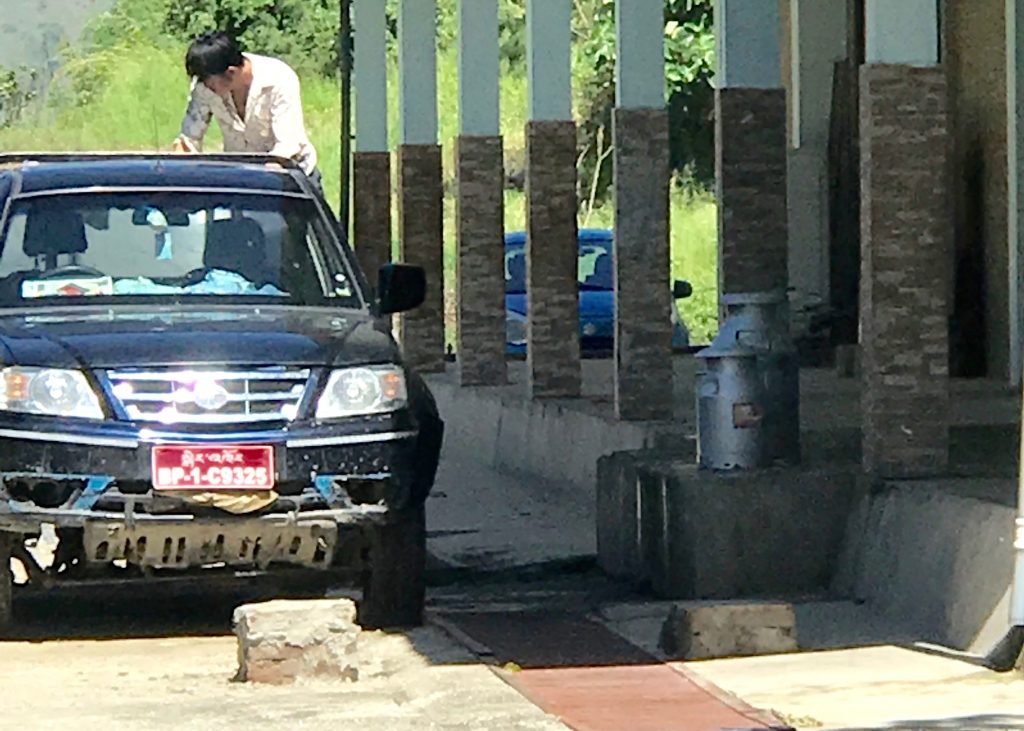
I was also interested to see the financial arrangements
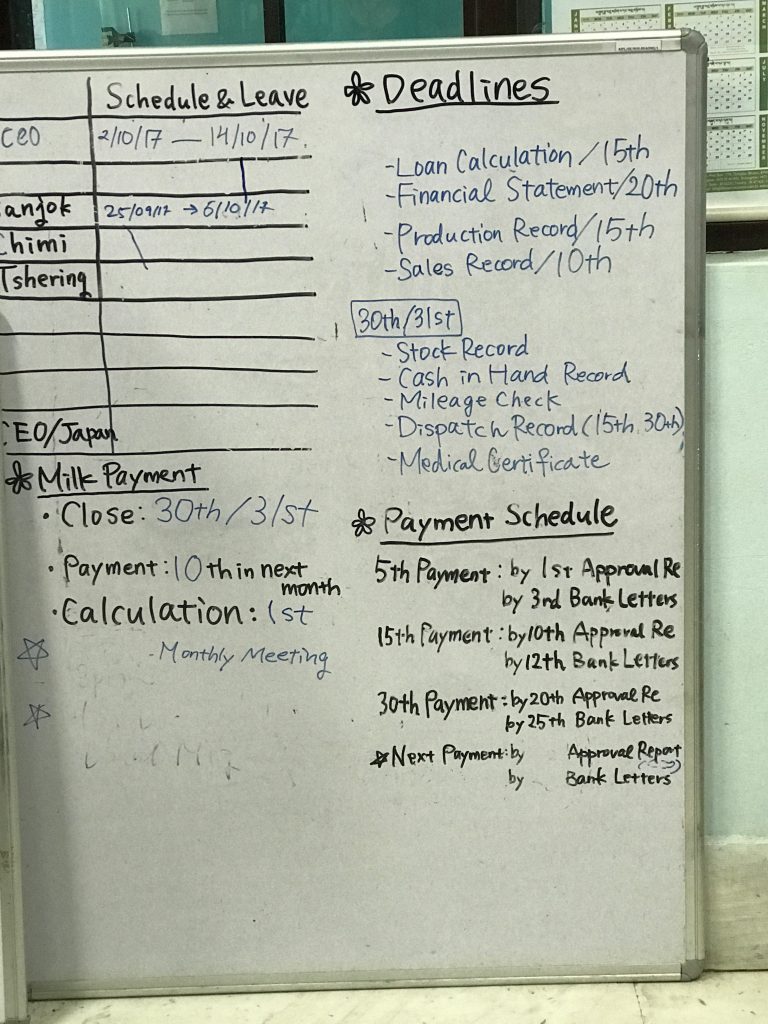
and the evidence of Japan-Bhutan collaboration through this well-known animation:
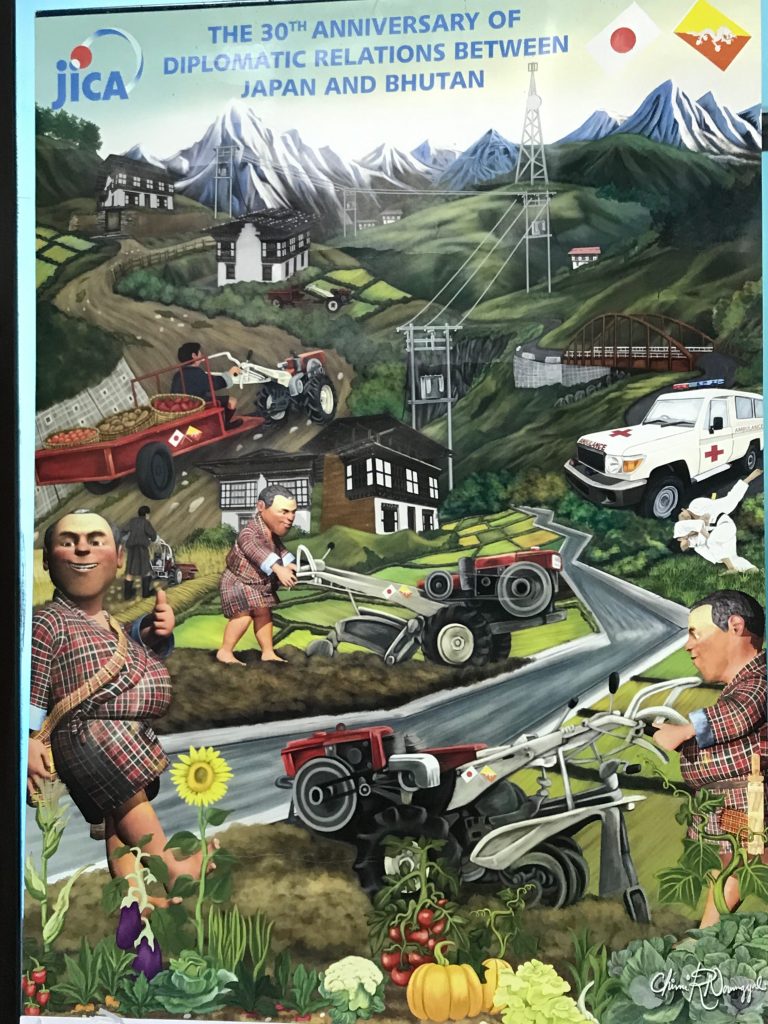
After we return, we find students, supervised by one and then two workmen, digging holes to install a ceremonial gate to welcome the prime minister. “We thought he was flying in for the ceremony and flying out again,” we say. “No,” Yeshi Penjor of HR replies. “Plans changed. He is flying into Bumthang and driving the rest of the way, making visits. He will be here tomorrow (Saturday) and leaving after the ceremony Sunday.”
Jeremy is full of anticipation: “Maybe the prime minister will hear me humming in the bathroom!”
I think the USA could learn something from Bhutan about ceremonial celebration. It’s certainly not my strong suit! We decide that Zoë will wear the handwoven kira, requiring a belt, and I will wear one of my existing outfits.
James purchased a kabney from the JC store. He had been warned that he would have to roll the edge of the fabric, but once we were looking at the fabric, the extensive labor involved became clear. First you have to separate all the threads; then you roll three threads together; then you roll three of the now-spun-strands together, alternating directions in order to create a V pattern that will also prevent the strands from tangling. I suggested giving the job to Jeremy and Juntsho shook her head at me, eyes wide. Clearly not a job for a young boy. Juntsho and her mother were trying to show us how to do the work (“any knitter can do it”), but when we expressed some hesitation, Juntsho sent the young woman who helps in the shop, off to see whether another shopkeeper (“who is often idle”) would be able to do the strand-work for us. Alas, she was already busy doing the same work for someone else. Next, Juntsho sent her assistant off to see the wife of the barber who agreed to do the work within a day for 150 ngultrum. Phew! Crisis resolved! As always, the critical path forward requires knowing people and knowing whom to ask for what.
